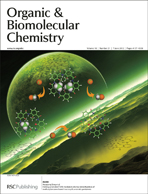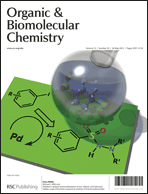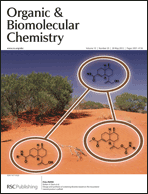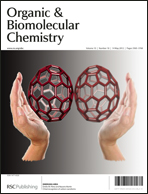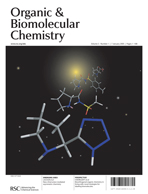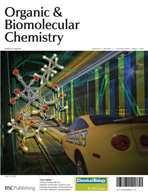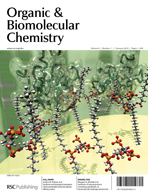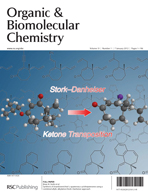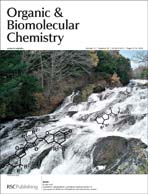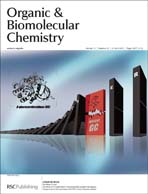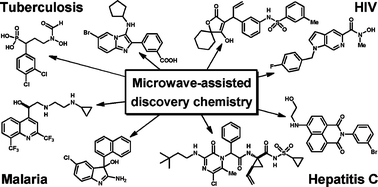This colourful front cover is courtesy of Koji Kano and colleagues from Doshisha University. This HOT paper from Kano et al. discusses a study on how to control the circulation time of a synthetic oxygen and carbon monoxide receptor by attaching poly(ethylene glycol) chains to the periphery of an iron porphyrin. By attaching chains of varying molecular weight Kano et al. are successfully able to modify the length of time the receptor remains in the blood stream.
PEGylation of an artificial O2 and CO receptor: synthesis, characterisation and pharmacokinetic study
Takunori Ueda, Hiroaki Kitagishi and Koji Kano
Org. Biomol. Chem., 2012, 10, 4337-4347
DOI: 10.1039/C2OB07044H
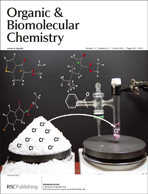 The inside cover highlights the work of Nuno Maulide and co-workers, who present a new protocol for the direct 2-electron oxidative Umpolung of halide salts with commercially available sulfoxide. This means that electrophilic halogenations (including halolactonisations) can proceed directly from the corresponding sodium salts.
The inside cover highlights the work of Nuno Maulide and co-workers, who present a new protocol for the direct 2-electron oxidative Umpolung of halide salts with commercially available sulfoxide. This means that electrophilic halogenations (including halolactonisations) can proceed directly from the corresponding sodium salts.
Sulfoxide-mediated Umpolung of alkali halide salts
Sebastian Klimczyk, Xueliang Huang, Christophe Farès and Nuno Maulide
Org. Biomol. Chem., 2012, 10, 4327-4329
DOI: 10.1039/C2OB25459J
Both of these articles are free to access for 6 weeks, so it’s easy to have a read.
You might also be interested in this perspective by Oskari K. Karjalainen and Ari M. P. Koskinen on the diastereoselective synthesis of vicinal amino alcohols.


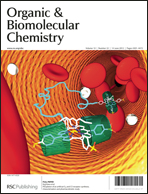 Welcome to OBC issue 22
Welcome to OBC issue 22









